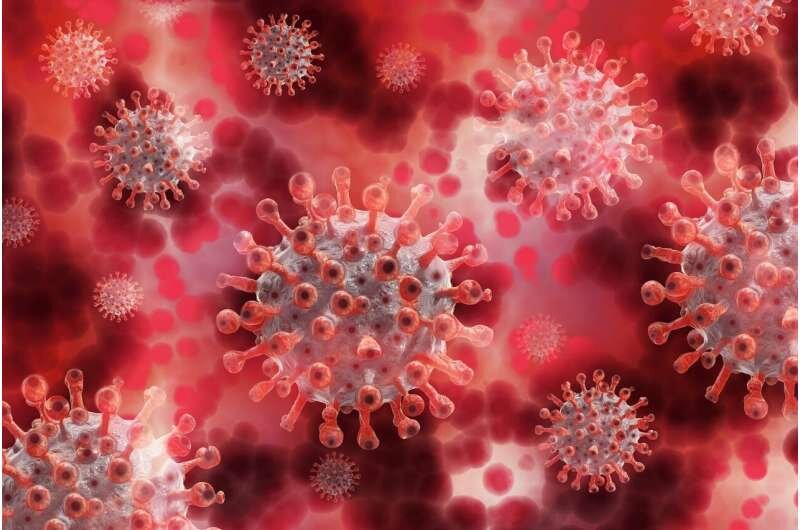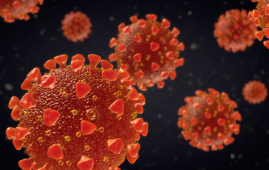

Since the start of the coronavirus disease 2019 (COVID-19) pandemic, the accessibility to accurate testing was shown to be a pivotal tool for the timely identification of the infection – not only to break the transmission chain and inform isolation recommendations but also to facilitate early treatment. We know that rapid antigen tests come with a lower sensitivity when compared to a polymerase chain reaction (PCR) test for the detection of Delta and Omicron SARS-CoV-2; however, they are an easy-to-use and cost-effective testing modality, and serial testing can improve their sensitivity.OC
This is especially pertinent in the context of the rapid emergence and global dominance of the SARS-CoV-2 Omicron variant, laden with manifold mutations in the genes that can lead to conformational changes in the viral parts important for rapid test detection.
And of course, this underscores the significance of understanding the performance of rapid antigen tests in the real-world setting since early reports showed it might be less effective in detecting the Omicron variant when compared to the other ones.
A research group led by Dr. Apurv Soni from the University of Massachusetts Chan Medical School aimed to compare the performance of rapid antigen tests (for both Delta and Omicron variants) with the gold standard of nasal PCR test results when testing participants serially every 48 hours.
Comparing test performance
In short, this paper offered a unique look at longitudinal PCR and rapid antigen tests in a large prospective cohort, which enabled capturing data not only at the onset of infection, but also during the infection throughout the emergence of the Omicron variant.
This was a non-prespecified analysis in which the authors aimed to determine whether the performance of rapid antigen tests differed in participants with Delta variant when compared to the Omicron. Asymptomatic study participants were enrolled from October 2021 to January 2022, with both rapid antigen and molecular testing performed every 48 hours for fifteen days.
The base for comparing the performance between the variants was test sensitivity, defined as the proportion of participants with positive rapid antigen test results related to their first positive test result obtained with PCR for different testing durations.
Detecting both Omicron and Delta SARS-CoV-2 variants
The researchers have found that the performance of rapid antigen tests was not inferior for the detection of the Omicron variant in comparison to the Delta variant. On the contrary, they have unveiled a higher proportion of participants with Omicron variant and a positive test results in comparison to participants with Delta variant on the same day and within 48 hours of positive PCR test.
However, it is important to note that overall same-day positivity for rapid antigen test on the onset of positive PCR test was low at 23.5%, but repeated testing within 48 hours improved this proportion to the overall percentage of 54.9%.
It also has to be emphasized that almost half (45.1%) of the participants with a positive PCR test result had had a false negative result on a rapid antigen test, irrespective of the variant implicated in the infectious process. This was observed even when two antigen tests were performed within 48 hours of the first PCR positivity.
The value of serial testing
Considering these findings, we can see that the behavior of rapid antigen tests in detecting SARS-CoV-2 infections is similar for Delta and Omicron variants, with an overall low detection rate on the same day as an initial positive PCR test result, and a higher detection rate when a second test is used 48 hours after the first one.
Naturally, additional work will be needed to improve our understanding of individuals with only PCR positive test results and appraise the public health significance of a false negative rapid antigen test in this subpopulation.
more recommended stories
 Study Reveals Cold May Impact SARS-CoV-2 Infection Rates
Study Reveals Cold May Impact SARS-CoV-2 Infection RatesThe Unexpected Protective Role of Rhinoviruses.
 Heart, Lung, & Brain Risks Persist in COVID-19 Survivors
Heart, Lung, & Brain Risks Persist in COVID-19 SurvivorsA French nationwide study reveals that.
 How COVID-19 and Vaccines Differ in Heart Inflammation
How COVID-19 and Vaccines Differ in Heart InflammationA team of international researchers led.
 Long COVID: Extended Paxlovid Treatment Offers Hope
Long COVID: Extended Paxlovid Treatment Offers HopeA new case series by UC.
 RSV Vaccine Response in Immunocompromised Adults
RSV Vaccine Response in Immunocompromised AdultsAccording to Johns Hopkins Medicine researchers,.
 Gut Microbiome Predicts Long COVID Risk
Gut Microbiome Predicts Long COVID RiskIn a recent pre-print study published.
 COVID-19 & Autoimmune Care Hope: Natural Proteins
COVID-19 & Autoimmune Care Hope: Natural ProteinsRecent research at Umeå University reveals.
 FasL Inhibitor Asunercept Speeds COVID-19 Recovery
FasL Inhibitor Asunercept Speeds COVID-19 RecoveryA new clinical trial demonstrates that.
 Impact of COVID-19 mRNA Vaccine on Myocardial Scarring
Impact of COVID-19 mRNA Vaccine on Myocardial ScarringA new study found a greater.
 Long-term Cognitive and Psychiatric Issues in COVID-19 Survivors
Long-term Cognitive and Psychiatric Issues in COVID-19 SurvivorsA new study published in The.

Leave a Comment